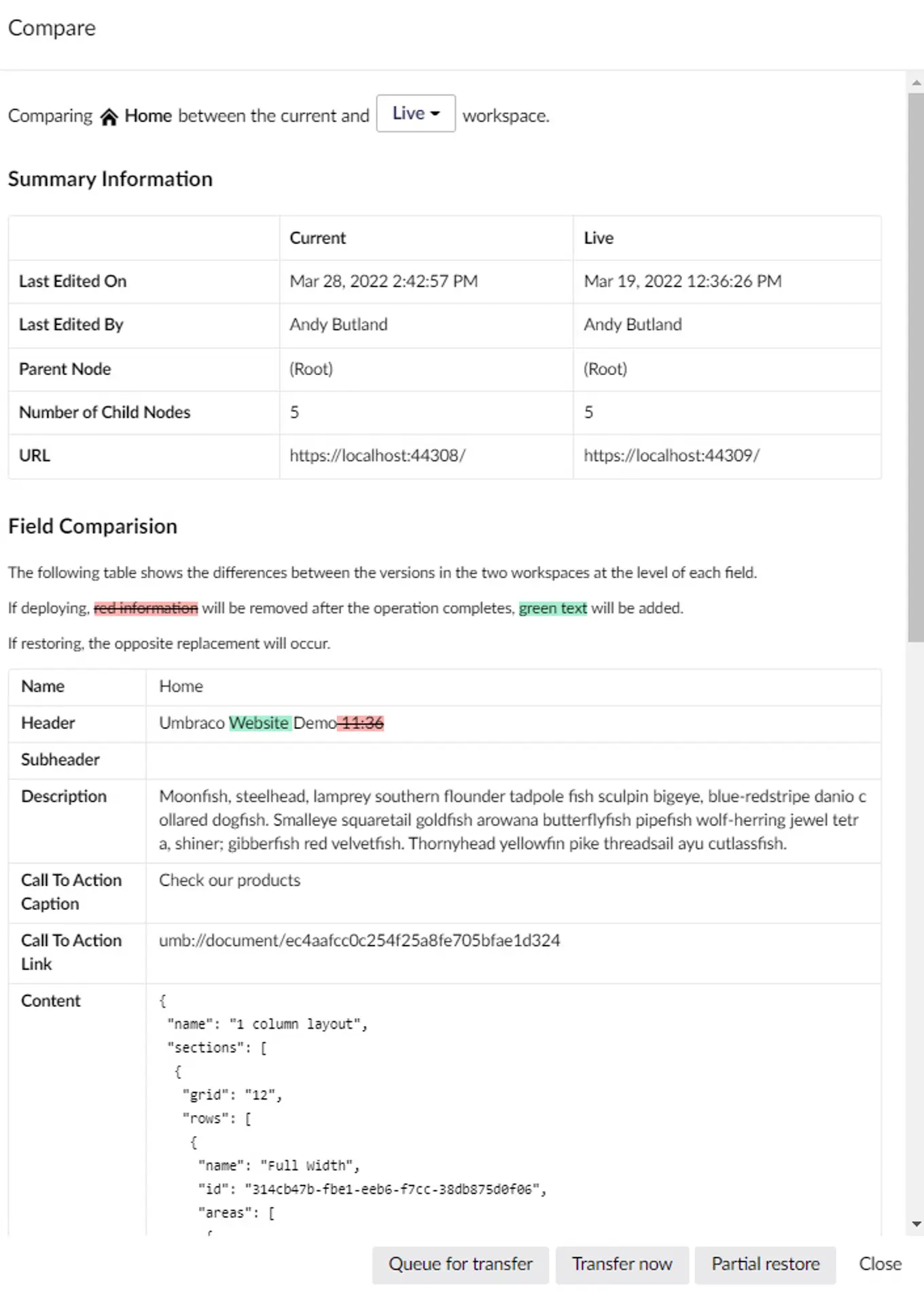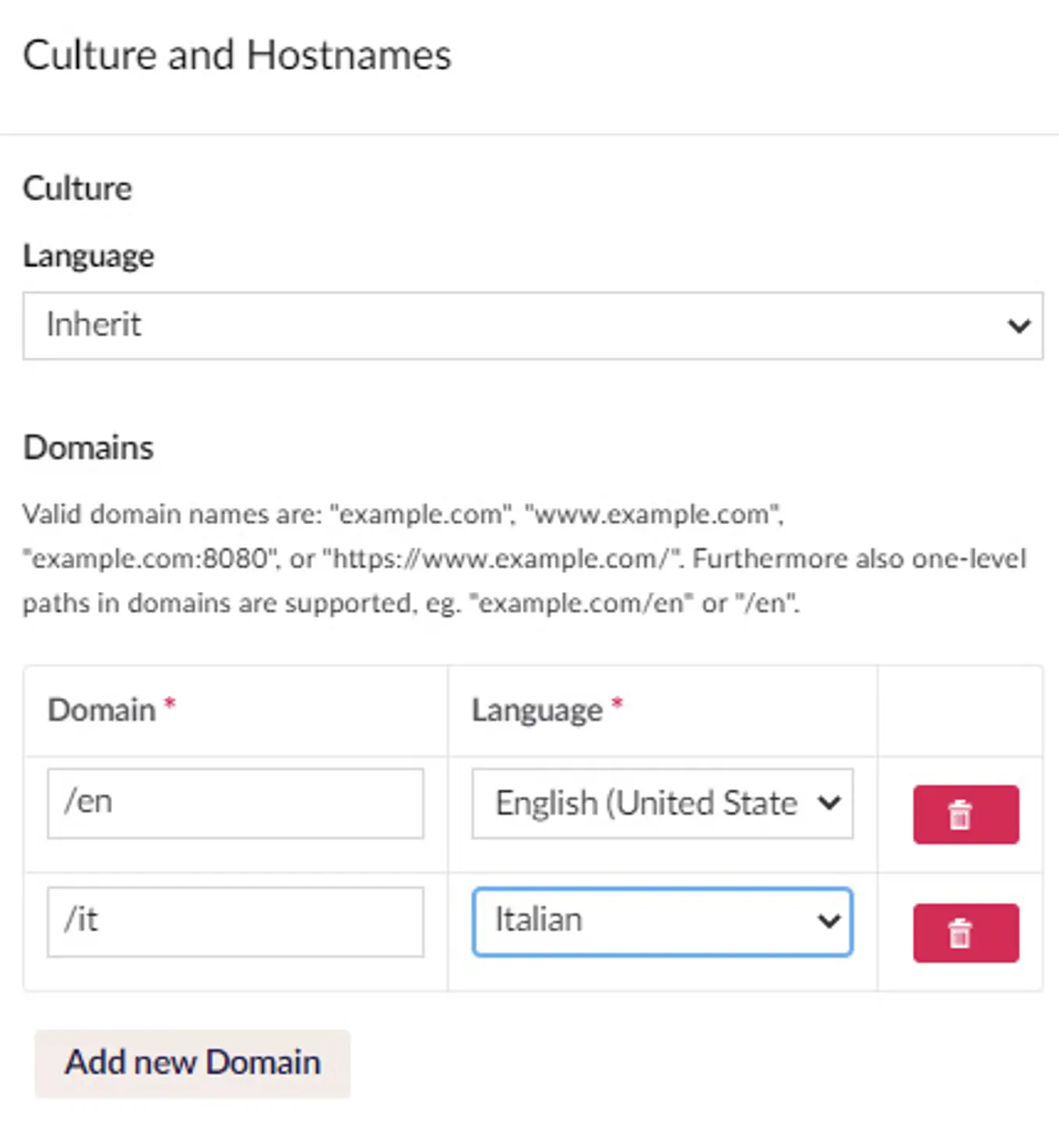The feature is opt-in by configuration, just to make sure we don't introduce any issues for existing installations that are upgraded and would then deploy this information by default.
For some setups, e.g. where specific hostnames are used in each environment, it may not make sense to have the information deployed. But, where language information is concerned and where language root paths like "/en" are used, it's likely useful to have this information included in transfers and restores and will save some manual setup.
This feature is highly configurable and allows you to choose what culture and hostname information is deployed. See the documentation for more details
And much more
There are many more improvements and fixes included with Umbraco Deploy. See the release notes for more details.
How to get your hands Umbraco Forms 8.12/9.4 and Deploy 4.6/9.4
As always, from today, all new Umbraco Cloud projects will be running the latest versions of both Forms and Deploy. For all our Umbraco Cloud customers with existing projects, this upgrade is only 2 minutes away with the upgrade minor version feature.












